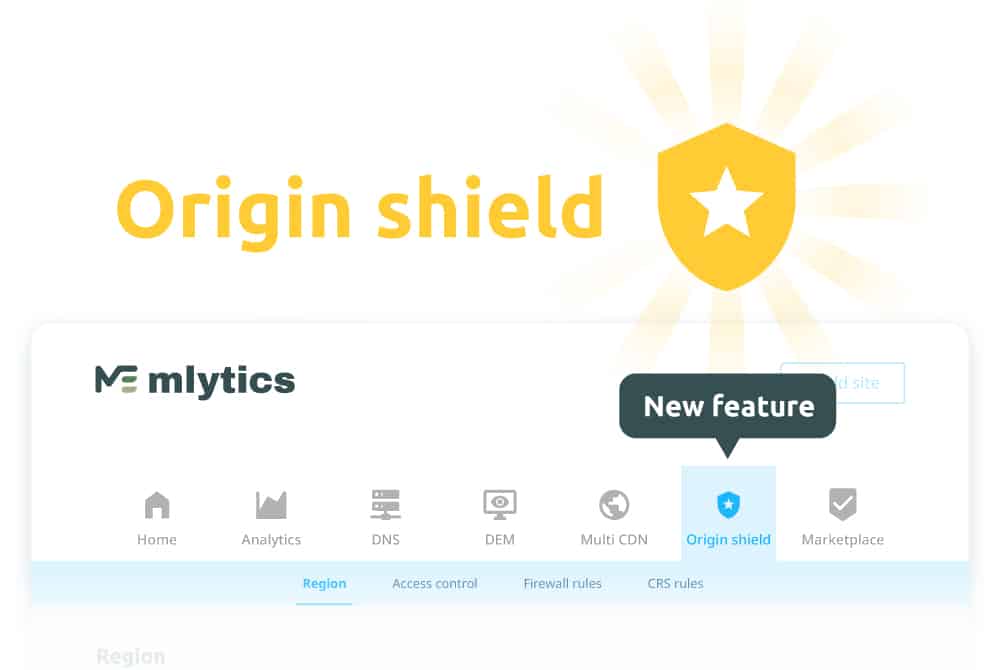This post is also available in: 繁體中文 简体中文
In the last decade, YouTube has emerged as a dominant force in the world of video content creation. However, recent changes and decreasing payouts suggest that content creators, particularly large-scale ones like media outlets, news channels, and studios, should consider diversifying their revenue streams. This article explores how content creators can not only survive but thrive outside of the YouTube ecosystem.
The Need for Diversifying Your Video Monetization Strategy
With the rising popularity and influence of video content, there’s no denying that platforms like YouTube provide a significant opportunity for creators to monetize their content. However, it’s becoming increasingly clear that relying solely on YouTube for income is a risky proposition.

The primary concern here is platform dependency. The adage “Don’t put all your eggs in one basket” resonates perfectly in this scenario. If YouTube decides to change its monetization policies and algorithms, or if it faces significant outages, content creators with YouTube-centric business models could suffer. There’s also the possibility of account suspension or even closure for myriad reasons, sometimes outside the creator’s control.
Additionally, YouTube’s payout has been reportedly decreasing year on year. This trend is worrying for content creators, especially larger entities like media outlets, news channels, and studios. As the payouts shrink, so too does the revenue of creators who are entirely dependent on the platform.
Lastly, YouTube’s primary monetization method, AdSense, is advertiser-driven. This means that while creators produce the content, the actual paying customer is the advertiser, not the viewer. This model can sometimes lead to a misalignment between what creators want to create and what advertisers are willing to pay for.
Diversifying your video monetization strategy is not just a good idea, but a necessity for long-term sustainability. By spreading income sources, content creators can insulate themselves against changes in individual platforms’ policies and payouts. Diversification can also empower creators to focus more on creating content that aligns with their vision and audience preferences rather than advertiser demands.
Subscription VOD (SVOD): The Power of Recurring Revenue

Subscription Video On Demand (SVOD) is a powerful monetization strategy that’s seen widespread adoption by major streaming services like Netflix and Amazon Prime Video. The concept is simple yet effective: viewers pay a recurring subscription fee, usually monthly or annually, for access to a platform’s entire content library or a portion of it.
The major strength of SVOD is the predictability of revenue it provides. Unlike the fluctuating ad revenues of YouTube, a successful SVOD model generates steady, recurring income. It also creates a stronger bond between creators and their audience as subscribers, in essence, invest in the content by paying the subscription fee.
SVOD is particularly effective for channels with a large array of content, as it offers subscribers an extensive variety of videos to watch. This can be a significant selling point, as it promises value for money to subscribers.
Another advantage of SVOD is the control it offers. It allows you to gate your content behind a paywall, ensuring that only those who truly value your content and are willing to pay for it have access. This paywall not only helps generate revenue but also filters your audience to those who are most interested in your content, which can lead to higher engagement and viewer loyalty.
However, it’s worth noting that to make an SVOD model successful, you need a sizeable library of high-quality content that’s regularly updated. If the content offering is insufficient or not updated frequently, viewers might not find enough value to justify a recurring subscription fee. As such, this model may be better suited to established creators or larger entities with the resources to produce content at scale.
Transactional VOD (TVOD): Making the Most of Unique Content
Transactional Video On Demand (TVOD) is another potent monetization method. In this model, viewers pay a one-time fee for access to specific pieces of content rather than a recurring subscription fee. This strategy is particularly effective for creators or platforms with a small collection of unique, high-quality content. Examples of this model include purchasing or renting a film on platforms such as Google Play Movies or iTunes.

TVOD allows creators to monetize individual pieces of content directly. This model can be incredibly effective when the content in question is exclusive or highly valuable. It offers viewers the flexibility to only pay for what they want to watch, which can be appealing to those not interested in a recurring subscription.
A significant advantage of TVOD is that it enables creators to set their pricing model based on the perceived value of each piece of content. High-demand content can be priced accordingly, potentially generating significant revenue from a single piece of content.
Access to TVOD content is typically controlled through paywalls, ensuring that only viewers who have paid can access the content. However, similar to SVOD, making TVOD a success requires a focus on quality rather than quantity. Each piece of content must be compelling enough to convince viewers to make a purchase.
Advertising VOD (AVOD): Building Viewer Base and Revenue Simultaneously
Advertising Video On Demand (AVOD) is a familiar concept to most content creators, largely thanks to YouTube, but it’s also a viable monetization strategy outside the platform. In the AVOD model, viewers access to content for free, but their viewing experience is interspersed with ads. The revenue is generated from these advertisements.

AVOD is a highly effective way to simultaneously build an audience and generate income. Because the content is freely accessible, it can attract a large audience. This model can be particularly effective when starting out or trying to reach new viewers who might not yet be willing to pay for access to content.
The revenue generated from AVOD relies on ad impressions and clicks, making it essential to have a large and engaged audience for this model to be profitable. This often means content creators need to focus not just on producing quality content, but also on marketing and audience-building efforts to ensure a wide enough reach.
One significant advantage of AVOD is that it allows creators to monetize every view, not just those from paying subscribers. This can lead to significant revenue if the content manages to attract a large viewership. However, it’s essential to remember that AVOD can be a double-edged sword; while it enables free access to content, the interruption from ads can sometimes lead to a less enjoyable viewer experience.
With this model, it is critical to understand your audience and curate video content based on their interests, and maximize views for the most ad revenue possible. So it is critical to pair it with a robust video analytics tool to gain full insight into who your audience is, what are they interested in, what their engagement cycle looks like, etc to strategically curate your content and find the best ad insertion window.
Despite this, the AVOD model, when paired with engaging, high-quality content and effective audience-building strategies, can become a lucrative video monetization strategy that allows creators to grow their viewer base while also generating revenue.
Third-Party Ad Servers: Tailoring Advertisements to Your Audience
Third-party ad servers provide another way to monetize your video content. These advertising organizations act as intermediaries between the companies that provide ads and the platforms that display them. This model allows creators to offer more tailored ads to their viewers, enhancing the effectiveness of the ad placements.
When you incorporate third-party ad servers into your video platform, they use data about your audience’s demographics, behavior, and preferences to choose the most relevant advertisements. This increases the likelihood that your viewers will be interested in the advertised products or services, making them more likely to engage with the ads. As a result, this can lead to higher ad revenues.
One key advantage of this method is the potential to improve the viewer experience. If the advertisements shown are highly relevant to your audience and align with their interests, they may be less disruptive and more valued by your viewers.
However, it’s crucial to keep in mind that this monetization strategy can face challenges due to ad-blocking software. A significant percentage of internet users employ ad blockers, which can prevent ads served by third-party servers from reaching your audience. Therefore, while third-party ad servers can provide a more personalized advertising experience, it’s essential to consider how prevalent ad blocking may impact this revenue stream.
Server-Side Ad Insertion: Bypassing Ad Blockers for Smoother Transitions
Server-side ad insertion (SSAI) is a powerful and increasingly popular video monetization strategy. It involves integrating ads directly into the video content from the server side. This strategy is particularly effective as it bypasses ad-blocking software, ensuring ads reach all viewers regardless of their ad-blocking settings.
In SSAI, the video content and the ads are stitched together on the server before delivery to the viewer. The result is a seamless transition between the ads and the video content, enhancing viewer experience and engagement. This smoother transition can lead to higher viewer retention rates, as the viewer perceives the ads as part of the video rather than an interruption.
One key advantage of SSAI is the ability to bypass ad blockers, which are commonly used by viewers to avoid ads. By integrating the ads directly into the video content, they become undetectable to ad-blocking software, ensuring your ads reach your entire audience.
Additionally, SSAI can offer faster ad delivery as the ads are already bundled with the content. This avoids the delay that can occur when ads are loaded separately, providing a smoother and faster viewing experience.
However, the adoption of SSAI requires technical proficiency or partnering with a provider offering this technology, and it may not be the right solution for every content creator or platform. But for those who can harness its potential, SSAI can be a highly effective way to enhance ad reach, viewer experience, and ultimately, revenue.
Catch-up TV: Leveraging Traditional TV Content for Online Revenue
Catch-up TV represents a blend of traditional television and on-demand streaming. This relatively new form of video delivery allows viewers to watch previously aired TV shows on VOD and OTT platforms. A typical Catch-up TV model involves charging a one-time fee for viewing a show, much like a Transactional VOD (TVOD) model.

The uniqueness of Catch-up TV lies in its ability to provide viewers with the flexibility to watch their favorite TV shows at their convenience. It eliminates the need to adhere to the schedule of traditional TV broadcasts, offering the viewer freedom and control over their viewing experience.
From a monetization perspective, Catch-up TV offers a unique opportunity to leverage traditional TV content for online revenue. It allows creators to attract traffic by providing access to popular TV shows post their original airing. This can help not only generate revenue but also expand the viewer base to include those who missed the original broadcast.
The exclusivity of the content offered in this model can create a compelling value proposition for viewers, potentially leading to increased traffic and revenue. Additionally, by featuring shows from different genres and demographics, Catch-up TV can help cover a broad range of viewer interests, leading to a more diverse audience.
Creating a Sustainable Business Model Outside of YouTube
In the world of video content creation, relying solely on YouTube for monetization can be a risky approach due to its ever-changing policies and fluctuating ad revenues. Diversifying your video monetization strategies not only mitigates this risk but also opens up new avenues for growth and revenue generation.
Subscription VOD (SVOD), Transactional VOD (TVOD), Advertising VOD (AVOD), Third-party Ad Servers, Server-side Ad Insertion, and Catch-up TV, all represent viable alternatives to YouTube monetization. Each of these strategies has its unique strengths and is best suited to certain types of content and audience demographics.
SVOD and TVOD can provide consistent, reliable revenue streams for content creators with a significant library of high-quality content. AVOD and Third-party Ad Servers can help you build a large viewer base while simultaneously generating revenue, even though they might have to contend with ad-blocking software. Server-side Ad Insertion bypasses these ad blockers and ensures smooth transitions between ads and content, enhancing viewer experience. Finally, Catch-up TV represents a unique opportunity to leverage traditional TV content for online revenue.
Ultimately, the best monetization strategy will depend on the specific needs and circumstances of each content creator or platform. In some cases, a combination of several strategies might yield the best results. The key is to continuously experiment, measure results, and adjust your approach as necessary.
Creating a sustainable business model outside of YouTube is not only possible, but it can also be highly rewarding. With the right strategies, you can ensure that your content creation efforts are financially viable, allowing you to focus on what you do best: creating engaging, high-quality content that resonates with your audience. By diversifying your revenue streams, you can build a more resilient and sustainable business in the ever-evolving world of video content.



